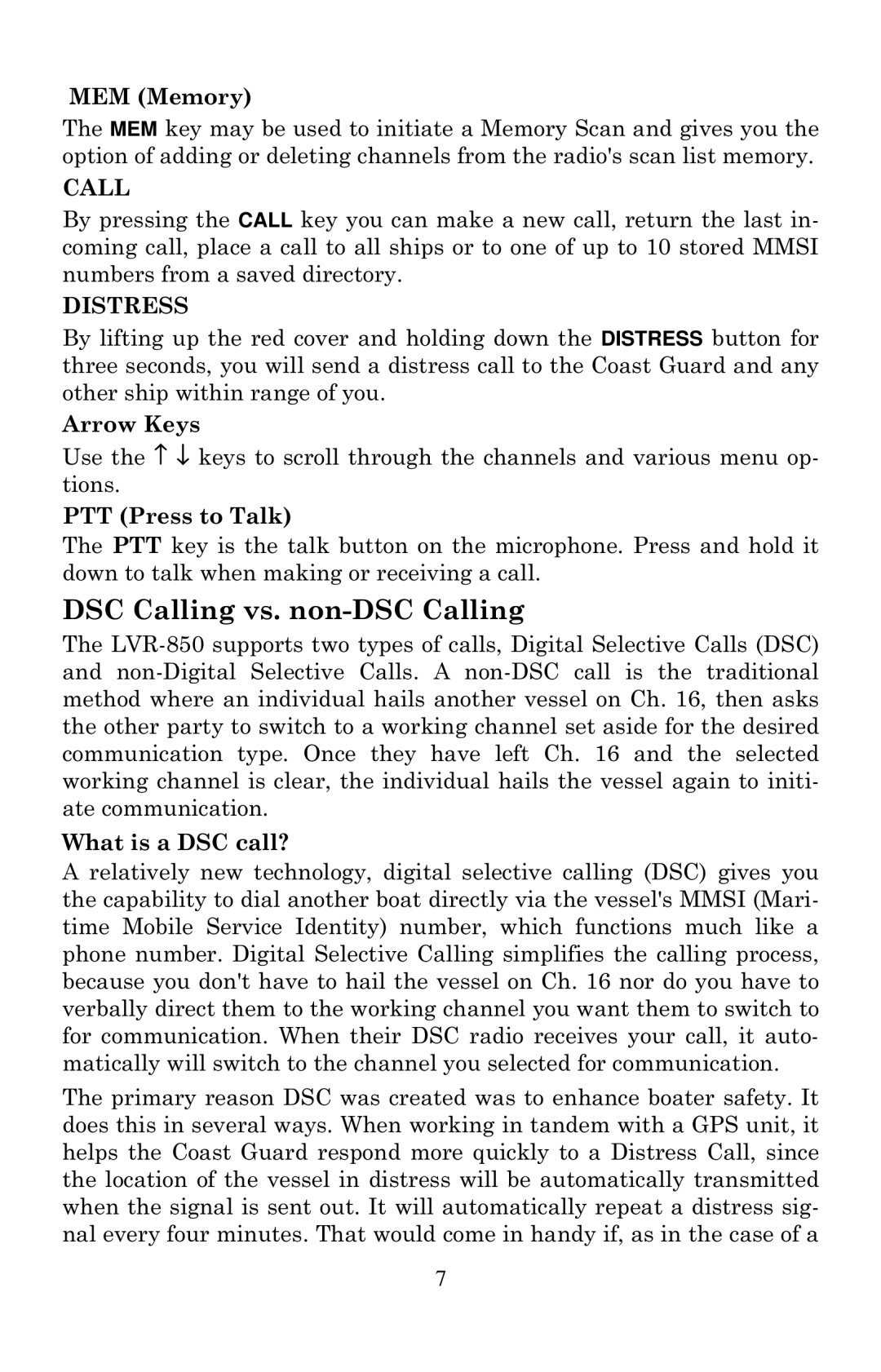MEM (Memory)
The MEM key may be used to initiate a Memory Scan and gives you the option of adding or deleting channels from the radio's scan list memory.
CALL
By pressing the CALL key you can make a new call, return the last in- coming call, place a call to all ships or to one of up to 10 stored MMSI numbers from a saved directory.
DISTRESS
By lifting up the red cover and holding down the DISTRESS button for three seconds, you will send a distress call to the Coast Guard and any other ship within range of you.
Arrow Keys
Use the ↑ ↓ keys to scroll through the channels and various menu op- tions.
PTT (Press to Talk)
The PTT key is the talk button on the microphone. Press and hold it down to talk when making or receiving a call.
DSC Calling vs. non-DSC Calling
The
What is a DSC call?
A relatively new technology, digital selective calling (DSC) gives you the capability to dial another boat directly via the vessel's MMSI (Mari- time Mobile Service Identity) number, which functions much like a phone number. Digital Selective Calling simplifies the calling process, because you don't have to hail the vessel on Ch. 16 nor do you have to verbally direct them to the working channel you want them to switch to for communication. When their DSC radio receives your call, it auto- matically will switch to the channel you selected for communication.
The primary reason DSC was created was to enhance boater safety. It does this in several ways. When working in tandem with a GPS unit, it helps the Coast Guard respond more quickly to a Distress Call, since the location of the vessel in distress will be automatically transmitted when the signal is sent out. It will automatically repeat a distress sig- nal every four minutes. That would come in handy if, as in the case of a
7
